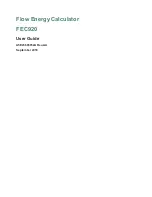
A-4
Program Execution / Ejecución de programa
Display / Presentación
Operation / Operación
>
2
(Example: Program P2)
(Ejemplo: Programa P2)
A?
32
<
B?
41
<
D?
65
I
41
I
23
I
<
597.8321153 (Area)/(Area)
<
40.30827888 (Length of side
c
)
<
(Longitud de lado c)
46.34318362 (Angle
α
)/(Angulo
α
)
A
O
46
°
20
°
35.46
<
67.96709416 (Angle
β
)/(Angulo
β
)
A
O
67
°
58
°
1.54
Note
• The conditional jump in the latter part of the program performs a process
that determines whether angle
α
is an acute angle or an obtuse angle.
First it checks whether the sum of the squares of side
b
and side
c
, which
form angle
α
, is greater than or less than the square of side
a
. That way it
can tell if angle
α
is an acute angle or an obtuse angle. Next, it uses the
formula
S
= to determine whether the result matches the
value calculated for
α
. If it does not match, it changes the value of
α
to
an acute angle if it is currently an obtuse angle, or to an obtuse angle if it
is currently an acute angle.
Nota
• El salto condicional en la parte posterior del programa realiza un proceso
que determina si un ángulo
α
es un ángulo agudo o un ángulo obtuso.
Primero verifica si la suma de los cuadrados del lado
b
y lado
c
, que
forman el ángulo
α
, es mayor o menor que el cuadrado del lado
a
. De
esta manera puede indicar si un ángulo
α
es un ángulo agudo o un
ángulo obtuso. Luego, utiliza la fórmula
S
= para determinar
si el resultado coincide con el valor calculado para
α
. Si no coincide,
cambia el valor de
α
a un ángulo agudo si actualmente es un ángulo
obtuso, o a un ángulo obtuso si actualmente es un ángulo agudo.
1
––
bc
sin
α
2
1
––
bc
sen
α
2






























